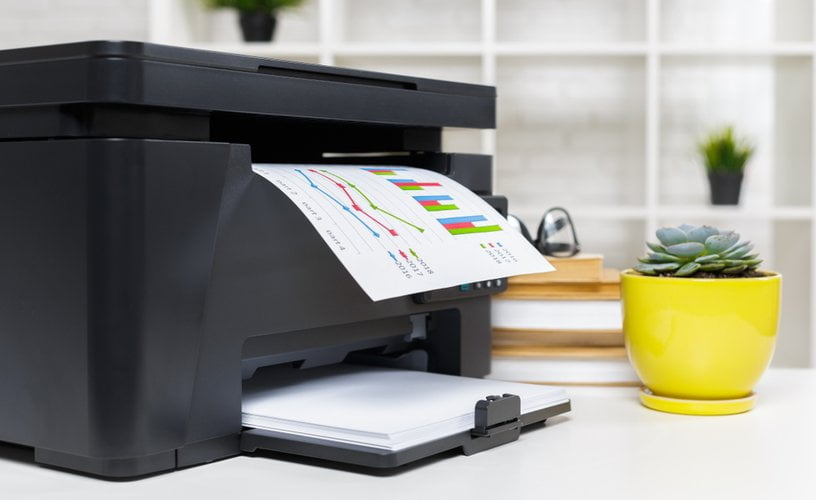If you’re in the market for a new printer, one of the biggest decisions you’ll have to make is whether you should choose an inkjet or a laser printer. Inkjet printers, like the name implies, spray wet ink directly onto your paper. Laser printers use a combination of toner (powder) and heat to print onto paper.
Contents
Price and ongoing costs
Business owners can find printers in each category that fit within a wide range of budgets. You may find inkjets for less than $100 – and, especially for remote workers – that may be all you need.
If price isn’t the main factor, then what is? Well, both of these types of printers will require ongoing supplies (known as consumables) and occasional maintenance. These costs are unavoidable.
When purchasing ink or toner, manufacturers will generally specify the number of pages that each ink or toner is capable of printing. A simple way of evaluating the costs and value for ink or tone is to determine the cost of ink per page. Divide the number of pages you’ll get from an ink or toner cartridge by the price of the cartridge.
Editor’s Note: Looking for a printer and copier solution for your business? If you’re looking for information to help you choose the one that’s right for you, use the questionnaire below to have our sister site, BuyerZone, provide you with information from a variety of vendors for free:
For either type of printer, it’s cheaper to print in black and white. Make sure, though, to consider all of the ways you will use your printer as well as who will be using the printer so you can accurately estimate maintenance costs
For enterprise-grade laser printers that can support medium to large workgroups, there will be some additional maintenance involved. For example, you may require replacement fuser cartridges or the replacement of other parts.
Quality for printing basic text
If you need a printer that will speed through print jobs, go with a laser printer. Laser printers have surged in popularity and have a reputation for speed. This holds true for even basic black-and-white laser models; it’s not unusual to see print speeds of 20 or more pages per minute.
Inkjet printer speeds have improved in recent years, but they still lag behind laser printing models. For example, you might see speeds in the range of 7 pages per minute on up to about 20 pages per minute.
Use cases for inkjet and laser printers
For basic business printing – where you’ll be printing reports, memos or research – and you’re concerned mostly about text quality, then you’re probably fine with either printer type. For crisp detail and small print (smaller than 12-point fonts), laser printers outperform inkjet versions.
Inkjets shine more when it comes to printing in color. If you print photos and presentations often, you might want to narrow your search to an inkjet. They can handle a wide range of paper types, and you’ll notice that colors appear truer to what you see on your camera or screen.
Laser is better for business-use cases where the printing volume is higher, speed matters and most printers have one ink color – black. They’re built to withstand a high capacity of documents, churning out pages and pages of black-and-white prints. This doesn’t mean that you can’t print photos on a color laser printer; it only means you shouldn’t expect incredible quality.
Both printer types offer MFP models (multifunction printers) that print, scan, copy and sometimes fax. For a small business, you can’t go wrong with either choice, but for large offices where there is a greater demand, a laser jet printer may make the most sense.
[“source=businessnewsdaily”]











